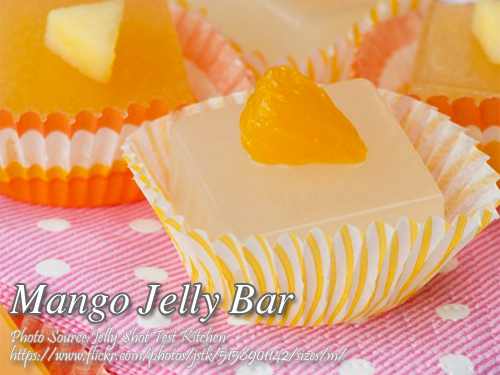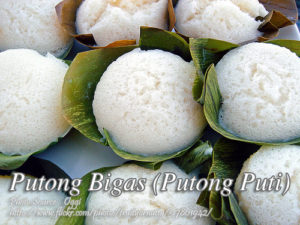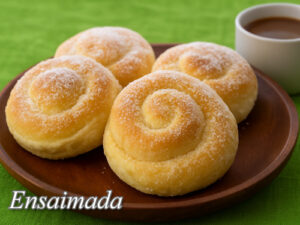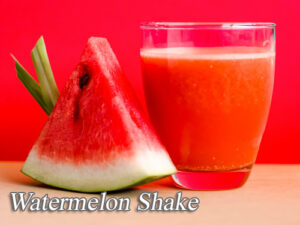Mango jelly bars is a delicious and refreshing dessert that is easy to make and very few ingredients. You only need three basic ingredients, mango puree, agar-agar bars and sugar. Of course you will need water to boil the agar-agar until is dissolves. But since agar agar bars are not very popular these days, you can use gelatin powder in making this mango jelly.
Mango Jelly Bars: A Sweet Treat from Childhood
Whenever I think of mango jelly bars, I’m immediately transported back to long summer afternoons at my grandmother’s house in Laguna. She used to make this refreshing dessert whenever we had fresh mangoes on hand, and her recipe was something that has stayed with me all these years. My aunt, Tita Lita, would always say that it’s the simplest yet most refreshing dessert you could make, especially when the heat gets unbearable. The sticky sweetness of the ripe mangoes mixed with the smooth texture of the jelly was a combination that made everyone reach for seconds.
One of the reasons I love this recipe is its simplicity. Just a few ingredients—mango puree, sugar, and agar-agar (or gelatin, if you prefer)—and you have a perfect dessert that not only pleases the eyes but also melts in your mouth. Every bite is like a burst of tropical sunshine.
A Nostalgic Mango Jelly Bars Recipe Passed Down
I remember my uncle, Tito Jun, would often tell us how agar-agar bars were a pantry staple when he was younger. Back in the day, agar-agar was used more frequently in Filipino desserts, and many households swore by it because it provided that firm texture jelly lovers crave. But nowadays, people have shifted towards gelatin powder, and it’s become the go-to option for most. I, however, still like to mix it up and use agar-agar when I can find it, because it reminds me of those special afternoons when the house smelled of simmering mangoes and gulaman.
Both agar-agar and gelatin work wonderfully for this dessert, but they do have subtle differences. Agar-agar, for instance, comes from seaweed, making it a vegetarian alternative, and it sets a little firmer than gelatin. On the other hand, gelatin tends to have a softer, melt-in-the-mouth feel, which is why many prefer it in modern jelly desserts. I suggest you experiment with both and see which one you prefer—though, honestly, you can’t go wrong with either!
The Secret to That Perfect Jelly Texture
One thing I’ve learned from watching my mother make Mango Jelly Bars is that the key to getting that smooth, silky texture is in the stirring. When you combine the mango puree and agar-agar (or gelatin), it’s important to stir constantly as it heats up. This helps dissolve the gelatin or agar-agar properly and ensures there are no lumps. My cousin Marites once told me that if you don’t stir enough, the mixture could turn out grainy, which nobody wants in their jelly bars!
The mango puree itself adds a delicious tangy sweetness, which pairs beautifully with the smoothness of the jelly. Mangoes, especially the ripe, golden ones from the provinces, are naturally sweet, so you don’t need too much sugar. My Lola always said, “The fruit should speak for itself,” and I’ve stuck with that philosophy ever since.
From Simple Ingredients to a Beautiful Dessert
It still amazes me how just three ingredients—mangoes, agar-agar (or gelatin), and sugar—can turn into such a delightful treat. Of course, you’ll need water to dissolve the gelatin, but beyond that, this recipe couldn’t be simpler. After simmering the mixture for a while, letting it reduce until it thickens slightly, all you have to do is pour it into ice molds and wait.
I used to be impatient as a kid, watching the mixture sit and firm up. My siblings and I would sneak into the fridge, hoping it had set just enough for us to grab a piece early. And when it was finally ready, slicing the jelly into finger-sized bars and wrapping them individually was part of the fun.
A Brief History of Filipino Jelly Desserts
Jelly-based desserts are deeply rooted in Filipino cuisine, often made during celebrations or to beat the heat. Agar-agar, which we commonly call gulaman, has been used in various local dishes for generations. It was introduced to the Philippines through Chinese traders, who valued it for its texture and its ability to set without refrigeration, a crucial quality in tropical climates.
The transition to using gelatin powder in modern kitchens speaks to the evolving nature of Filipino cooking, but the essence of jelly desserts remains the same—refreshing, light, and perfect for the tropics.
The Joy of Sharing Mango Jelly Bars
One of the best things about making mango jelly bars is that they’re so easy to share. Whenever I make a batch, I can’t help but think of my cousins and how we used to wrap the bars in plastic wrap, like little candy treats, and store them in the fridge. These bars are perfect for packing into lunchboxes, bringing to picnics, or simply enjoying at home as a light dessert after a hearty meal.
Every time I prepare this dessert, it brings back those sweet memories of family gatherings, and I can’t help but smile at the simplicity and joy this dish brings. Whether you make it with agar-agar or gelatin, this treat is bound to become a favorite for anyone who tries it.
So, the next time you find yourself with some ripe mangoes on hand, why not try your hand at making a batch of these refreshing mango jelly bars? They’re easy to make, full of nostalgic flavor, and always a hit—just like they were in my grandmother’s kitchen.
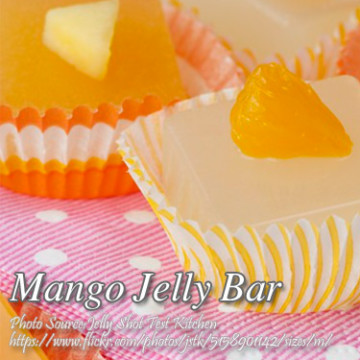
How to Make Mango Jelly Bars
Ingredients
- 2 bars agar-agar dried gulaman bars, broken into pieces
- 6 cups pureed ripe mango mango puree
- 1 cup water
- 1 & 1/2 cups sugar
Instructions
How to make Mango Jelly Bars:
- In a large saucepan, soak gulaman pieces in pureed mango and water. Bring to a boil, stirring constantly until the dried gelatin dissolves and mixture thickens slightly.
- Add sugar and simmer until mixture is reduced to 4 cups. Pour into 2 ice-tray molds, set aside until firm.
- Slice into finger-size bars and wrap in plastic wrap.
Notes
Cooking Tips:
Use Ripe Mangoes for the Best Flavor
The sweetness of your Mango Jelly Bars depends largely on the ripeness of your mangoes. Choose fully ripe, golden mangoes for a naturally sweet and vibrant flavor that balances perfectly with the jelly. If your mangoes are too tart, you might need to adjust the sugar to get the desired taste.Stir Constantly for a Smooth Texture
When dissolving the agar-agar or gelatin, make sure to stir the mixture continuously to prevent lumps from forming. This helps the gelatin dissolve evenly, giving your jelly bars a smooth and silky texture. A lumpy mixture can result in uneven firmness, so keep an eye on it as it heats up.Let the Jelly Set Completely Before Slicing
Patience is key when making mango jelly bars. Allow the jelly to set completely in the fridge before attempting to slice it into bars. Cutting it too early can cause it to fall apart, so wait until it’s firm and holds its shape for the best presentation.
